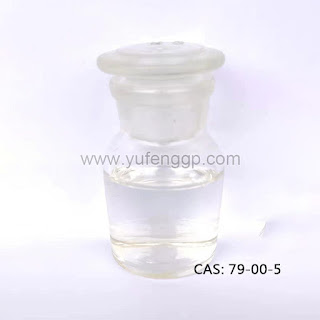1,1,2-Trichloroethane: Understanding the Chemical and Its Uses
1,1,2-Trichloroethane is a colorless liquid with a sweet odor, also known as TCA. This chemical compound is used in various industrial applications, including as a solvent for organic materials, a degreaser, a refrigerant, and as an intermediate in the production of other chemicals. In this article, we will explore the properties of 1,1,2-Trichloroethane, its uses, and its impact on the environment.
Properties of 1,1,2-Trichloroethane
1,1,2-Trichloroethane is a chlorinated hydrocarbon with the molecular formula C2H3Cl3. It has a density of 1.46 g/cm³, a boiling point of 115.2°C, and a melting point of -38.8°C. It is soluble in many organic solvents but is insoluble in water. It is a non-flammable liquid but can decompose when exposed to high temperatures, releasing toxic gases such as hydrogen chloride and phosgene.
Uses of 1,1,2-Trichloroethane
1,1,2-Trichloroethane is widely used in various industries due to its solvent properties. It is used as a degreaser in the metalworking industry and as a solvent for plastics, resins, and synthetic fibers. It is also used in the production of refrigerants, pharmaceuticals, and pesticides. It is also used as an intermediate in the production of other chemicals, such as vinylidene chloride, which is used in the production of PVC.
Impact on the Environment
Like many chlorinated hydrocarbons, 1,1,2-Trichloroethane has been found to have negative effects on the environment. It is toxic to aquatic organisms and can bioaccumulate in fish and other aquatic animals. It is also known to be persistent in the environment and can take a long time to break down. When released into the atmosphere, it can contribute to the formation of ground-level ozone, a harmful air pollutant.
1,1,2-Trichloroethane is classified as a hazardous substance by various regulatory agencies, including the Environmental Protection Agency (EPA) in the United States. The EPA has set a maximum contaminant level of 5 parts per billion (ppb) for 1,1,2-Trichloroethane in drinking water.
Regulations and Safety Measures
Due to its potential harmful effects on human health and the environment, 1,1,2-Trichloroethane is subject to strict regulations in many countries. In the United States, it is regulated under the Toxic Substances Control Act (TSCA) and the Clean Air Act (CAA). It is also subject to regulations under the Resource Conservation and Recovery Act (RCRA) and the Comprehensive Environmental Response, Compensation, and Liability Act (CERCLA).
Safety measures must be taken when handling 1,1,2-Trichloroethane CAS 79-00-5. It is a hazardous substance and can be harmful if it is inhaled, ingested, or comes into contact with the skin or eyes. It is also a flammable liquid and can form explosive mixtures with air. Proper ventilation and protective equipment must be used when working with this chemical.
Conclusion
1,1,2-Trichloroethane is a chemical compound with various industrial applications, including as a solvent, degreaser, refrigerant, and intermediate in the production of other chemicals. However, it is also known to have negative effects on the environment and human health.

评论
发表评论